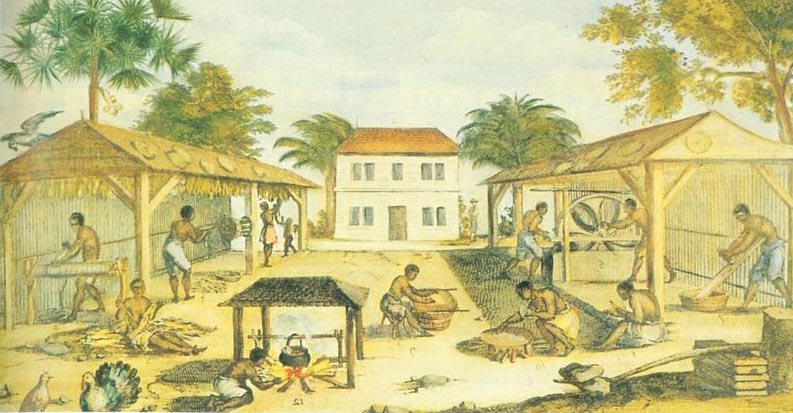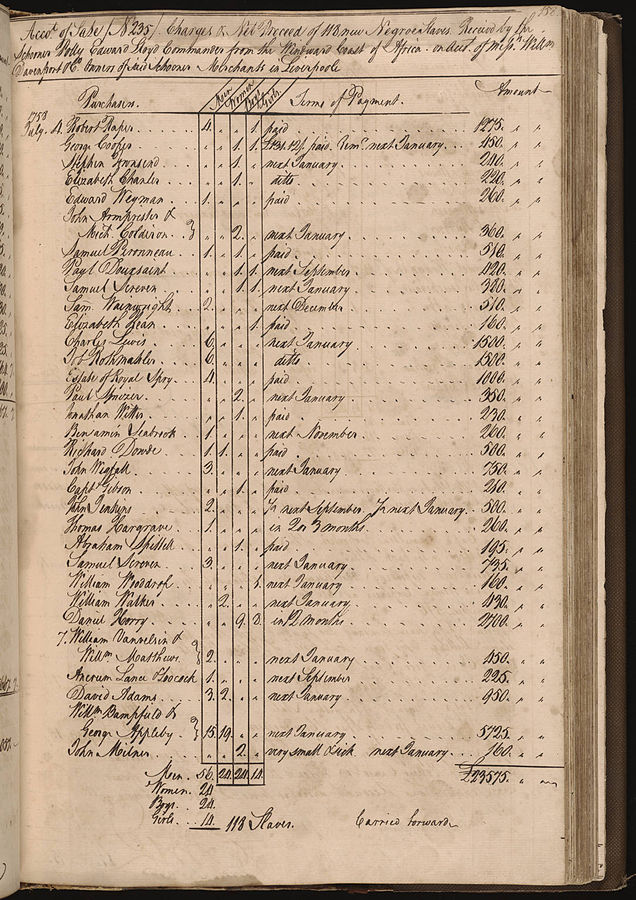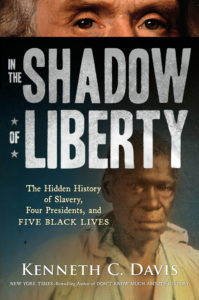by Kenneth C. Davis
American Slavery Time Line in Early American History
Slavery in America began in the early 17th Century and continued to be practiced for the next 250 years by the colonies and states. Slaves, mostly from Africa, worked in the production of tobacco crops and later, cotton. With the invention of the cotton gin in 1793 along with the growing demand for the product in Europe, the use of slaves in the South became a foundation of their economy.

In the late 18th century, the abolitionist movement began in the north and the country began to divide over the issue between North and South. By 1820, the Missouri Compromise banned slavery in all new western territories, which Southern states saw as a threat to the institution of slavery itself. In 1857, the Supreme Court decision known as the Dred Scott Decision said that Negroes (the term then used to describe the African race) were not citizens and had no rights of citizenship; therefore, slaves that escaped to free states where not free but remained the property of their owners and must be returned to them.
American Slavery Time Line: 1492–1663
1492 – Columbus makes the first of four voyages to the “New World.” Black men arrive with Columbus as sailors, and other Africans come as soldiers with the Spanish explorers who later conquer and colonize the Ca rib bean islands and the Americas.
August 20, 1619 – Twenty Africans are brought to the English colony of Jamestown, Virginia. Sold as indentured servants, these African captives must work for a period of time but are promised their freedom. Although not the first Africans in North America, they are considered the first Africans to settle in the future United States.
1624 – The Dutch colony of New Amsterdam ( later New York) is founded by approximately 100 settlers; within a year, as many as eleven black African male slaves arrive from Angola.
1638 – The first American ship carrying enslaved Africans from the Caribbean island of Barbados, the Desire, sails into Boston Harbor; its cargo also includes salt, cotton, and tobacco.
1645 – The Rainbow, the first American ship bound for Africa to trade for captives and return them to America, sails from Boston.
1652 – Rhode Island, a New England colony, outlaws slavery. But the slave trade becomes so profitable that slavery is later permitted; Newport, Rhode Island, emerges as a major slave port.
1662 – A Virginia law declares that children take on the status of their mothers. Under this law, children born of enslaved mothers are also enslaved, even if their father is white and free.
American Slavery Time Line: 1664–1700
1664 – The British establish legal slavery when they take over the colonies of New York and New Jersey. Maryland passes a similar law, which also states that freeborn women who marry enslaved men are considered enslaved.
1684 – Africans are imported into Philadelphia, beginning a thriving slave trade in that city.
1688 – In Germantown, near Philadelphia, four Quakers issue what is considered the first American antislavery petition. Based on the Golden Rule, “Do unto others as you would have them do unto you,” the petition asks fellow Quakers to give up their slaves.
1694 – South Carolina begins to grow rice; a boom in rice farming creates an increased demand for slave labor.
1700 – In Boston, Judge Samuel Sewall, one of the judges in the famous Salem witch trials, writes one of the first antislavery tracts in America. In The Selling of Joseph, he writes, “All Men, as they are the Sons of Adam . . . have equal Right unto Liberty.” By 1700, there are approximately 28,000 black people in British North America, about 11 percent of the total population, then estimated around 250,000. Enslaved people are being imported into Virginia at the rate of about 1,000 per year.
The African slave trade becomes the world’s most profitable business during the eighteenth century.
American Slavery Time Line: 1705–1754
1705 – Massachusetts declares marriage between whites and blacks illegal. Virginia rules that slaves are “real estate,” restricts their travel, and calls for stricter penalties for marriage or sexual relations between the races, which had been illegal since 1691.
1713 – Quaker opposition to slavery in Philadelphia continues to grow; some Quakers develop a plan for emancipating slaves and returning them to their native lands in Africa.
1739 – The Stono Rebellion, a violent slave uprising, is put down in South Carolina. Thirty white people and forty-four black people die in the violence.

1754 – John Woolman, a Philadelphia Quaker and tailor, publishes Some Considerations on the Keeping of Negroes: Recommended to the Professors of Christianity of Every Denomination. By arguing that slavery is unchristian and cruel, it becomes the most widely distributed antislavery work before the Revolution.
American Slavery Time Line: 1754–1776
1758 – Philadelphia Quakers stop buying and selling slaves and press for outright abolition of slavery. Quakers in other states and in London follow suit.
1770 – Anthony Benezet, a Quaker schoolteacher, begins a school for free blacks in Philadelphia. He helps hundreds of black people— some free and others enslaved—learn to read and write. New England slaves petition colonial legislatures 1773–1779 for freedom.
1775 – The American Revolution begins in April. Lord Dunmore, the royal governor of Virginia, offers freedom to any enslaved peoplewho escape and join the king’s forces. Black patriots fight in all of the early battles of the Revolution. Other escaped slaves join the British army. General Washington initially refuses to allow blacks to serve but later reverses that policy. Black soldiers eventually account for between 10 and 20 percent of the Continental Army and Navy.
1776 – The Continental Congress adopts the Declaration of Independence in Philadelphia. During the debates, Congress removes a passage in Thomas Jefferson’s draft that condemns the slave trade.
Kenneth C. Davis is the New York Times bestselling author of America’s Hidden History and Don’t Know Much About® History, which gave rise to the Don’t Know Much About® series of books for adults and children. He is the author of IN THE SHADOW OF LIBERTY: The Hidden History of Slavery, Four Presidents, and Five Black Lives and lives in New York City.

